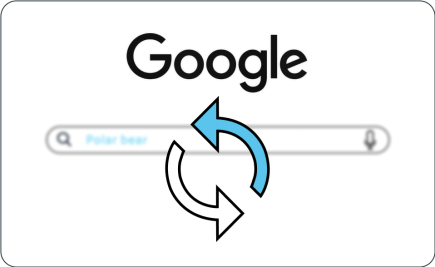The video format is continuing to gain in popularity. Its pace matches that of social media, without which video content would not reach such a wide audience.
In 2019, the average Internet user would spend 84 minutes per day watching videos online, against 67 minutes the previous year. In 2021, this estimate will reach 100 minutes (Zenith). The consequence of this boom has been a fast increase in video production on the part of businesses and brands in order to improve their notoriety or to capture the interest of more people.
With over 2 billion monthly users, YouTube constitutes a wealth of opportunities for advertisers wishing to publish video content. Yet, with 300 hours’ worth of images being posted on the platform every minute, it is impossible to provide any visibility for this content without the leveraging effect of YouTube SEO. How do I optimise YouTube videos for SEO? Read on for a YouTube SEO guide.
Why is SEO important on YouTube?
What does SEO mean in YouTube? To better understand why one should bother with the SEO of a video on YouTube, it is important to grasp just how popular the platform has become around the globe. The following figures should give you an idea as to the scale of the phenomenon:
- YouTube is the second most visited website in the world, just behind Google… who bought the platform back in 2006, just one year after it was created by three former PayPal employees.
- 2 billion users get connected each month.
- 1 billion hours’ worth of YouTube videos are watched every day.
- 100 countries have access to the platform in 80 different languages, covering 95% of the world population.
- 300 hours’ worth of videos are uploaded every minute.
- YouTube is used by 87% of the advertisers who practise video marketing.
(References: YouTube / DataReportal / Social Media Today)
For advertisers, these figures are both good and bad. On one hand, the platform’s popularity is increasing, improving the chances of their videos being visible: the higher the number of users, the better the chances of reaching a significant proportion of them. On the other hand, the sheer volume of content available to Internet users tends to submerge most videos. In that, making content visible is like trying to make a drop of water stand out in the ocean that surrounds it.
This is where YouTube SEO comes in, as a method which aims to improve a video’s (or a channel’s) ranking to make it visible to as many people as possible.
YouTube ranking and algorithm
There is nothing obvious about the notion of YouTube SEO. It may be tempting to believe that the success of a video published on the platform mainly depends on its intrinsic characteristics: as long as it is well produced, offers professional quality, and covers a topic that Internet users are interested in, it has to hit its mark.
And yet, things are not quite that simple. According to Neal Mohan, product manager at YouTube, over 70% of the time spent on the website is spent watching content recommended by the algorithm. The latter influences the ranking of the videos on the home page, in the search results, in the suggested videos, the trends, subscriptions to channels, and notifications. This algorithm thus mostly dictates how the users behave and determines which videos they will see or not. Taking this algorithm into account is therefore crucial, and the key to successful YouTube SEO if you wish to reach the right audience.
The way the algorithm works has changed over time. Even if the settings remain a secret, a few typical tendencies do transpire:
- Up until 2012, videos were ranked based on the number of views. Problem: by making this the main (or even the only) ranking factor, the platform was tacitly encouraging advertisers to practise click baiting. In essence: an attractive video title, potentially misleading, to generate clicks and views.
- Between 2012 and 2016, the most crucial YouTube ranking factor was the watch time, meaning how long a user would stay and watch a video for. No need to be an expert in YouTube SEO to guess the excesses this led to: An exponential increase in the duration of the videos, creating artificial suspense to push back the moment when the relevant information would come up to keep the viewers watching for longer, etc.
- As of 2016, several criteria are considered essential when it comes to the SEO of a video on YouTube: the quality of the video, the keywords, along with their placement in the various fields, user satisfaction and engagement, the frequency with which videos are being posted on the channel, etc. Keeping in mind that the number of views is still as important as ever, but no longer at the expense of other factors.
These criteria all contribute to a score that each piece of content is assigned, allowing the algorithm to recommend content that should match the users’ tastes and correspond to what they are looking for. YouTube SEO aims to activate relevant levers to bring a specific video to the algorithm’s attention, so that it can push it forwards for users to see. An approach which is quite reminiscent to Google SEO when it comes to ranking content in the search results. This adjacency is reinforced by the connection that exists between the two platforms.
The ranking factors on YouTube
The list of ranking criteria on YouTube is long, as shown on the graph below:
Still, not all of these are directly actionable – much as the number of “likes” is correlated with how long a video has been online, or as the number of subscribers only grows with having created (and posted) regularly on a channel.
Let’s focus on the YouTube SEO criteria that you can actuate as you upload your very first video. Optimize your videos with our simple tips for each ranking factor.
YouTube SEO: Choosing the right keywords
The use of keywords as part of a YouTube SEO strategy is reminiscent to how they are used in traditional SEO – meaning on search engines. The keyword selection is indeed one of the very first steps of a content optimisation. These “video keywords” need to be selected based on the topic covered in the video, the company’s area of activity, the targets, as well as the queries users write in YouTube’s internal search engine.
Just as with Google SEO, one must find a happy medium between popularity (the search volume for a given target keyword) and competition (the number of times this keyword was used by the competition).
There exist several methods to look for relevant keywords in YouTube SEO:
- Specific tools (Keywords Everywhere, Google Keyword Planner, etc.).
- Reusing the same keywords that you have already included in your content optimisation.
- Keyword research on Google (perusing associated videos through the engine’s “Video” tab).
- Benchmarking (looking for inspiration among the videos published by the competition that have proven successful).
Keywords are the backbone of YouTube SEO: they must be included wisely in the various fields associated with the video.
YouTube SEO: Personalisation and optimisation of fields
The algorithm cannot view a video to know whether or not it is relevant to the users’ queries. Instead, it needs to rely on the fields that “surround” the video: the title, the description, and the tags. Beyond the machine, there are the users themselves, who check these fields to decide if they are going to click on the video (the title) and to continue watching or to interact once they have started (the description).
Consequently, the next important step of YouTube SEO will be the customisation of these fields and their optimisation so that they meet both the requirements of the algorithm and those of the Internet users.
- The title is similar to the “H1” tag, which is well known to text content creators. It must be made up of at least 5 words, one of which should be the target keyword (or key phrase) and aim to capture the users’ attention through various markings (using caps, including emojis, etc.).
- The description is one of the key elements of YouTube SEO in that it provides specific information as to the contents of a video. Here, the keywords are more important than the marketisation of the content. The descriptions give you an opportunity to add external links to your website’s pages (home page, products, services, contact) and to your social media accounts, as well as to other videos from the same channel or a different one, to insert references to give credibility to the content, etc. Only the first few hundred characters initially show up (the rest only being accessible by clicking the “show more” button). This means you need to include as many important terms as possible (especially keywords) at the beginning.
- The tags allow the algorithm to categorise the video, and help the users find it more easily. They also make it possible to work on the semantic field surrounding the main keyword. Ideally, you’ll want to include between 5 and 10. Such tools as VidIQ and TubeBuddy (Chrome extensions) will help you find the most popular tags in connection with your particular keywords.
YouTube SEO: Audience Retention
How long the viewers keep watching as well as their interactions are taken into account by the algorithm. These criteria fully deserve their place within a YouTube SEO strategy. They may be combined into a single, more global factor: audience retention on the video, as well as, more broadly, on the channel/platform. Don’t forget that YouTube’s end goal remains promotional: the longer the Internet users spend watching videos, the more likely they are to be subjected to ads which, in turn, generate revenue. This means the algorithm has a lot to gain by favouring content that encourages the users to remain on the platform!
There are two main elements to work on:
- Watch time is still an instrumental lever when it comes to YouTube SEO. Which doesn’t mean it should interfere with the quality of the video or give the impression that the content has been artificially stretched to keep the user’s attention for longer. On the contrary, a good video is not necessarily a long video! An excellent technique consists in using the first few moments as a teaser for what is to come: leave some questions unanswered, which you will address throughout the video.
- Interactions refer to the various actions performed by the users: “liking” a video, leaving a comment, subscribing to a YouTube channel, clicking links to other videos, etc. This is a critical aspect of YouTube SEO, as long as these interactions increase the time users spend on the platform, which the algorithm particularly likes. To this end, the best method remains to encourage the viewers to react, to subscribe, or to click the links in question – via CTAs (calls to action) placed in the description and throughout the video itself.
Interactions have one more major advantage: they increase a video’s popularity, which is another way to send a positive signal to the algorithm.
YouTube SEO: Number of views
The number of clicks (which dictates the number of views) indirectly influences the algorithm by highlighting popular content. It is therefore one aspect of YouTube SEO that should not be ignored, even if it may not be the most crucial.
To boost the click-through rate, you can optimise your video based on three different aspects:
- The title – which should be made as compelling and attractive as possible.
- Placing keywords in the dedicated fields – to increase the chances of the video being displayed as a response to certain queries.
- Personalising the video thumbnail – the image that illustrates the video on the search result page and on the channel’s page.
Ranking outside of YouTube
One aspect that advertisers don’t give enough attention to involves not YouTube SEO, but the ranking of the video on third-party media. In other words: off page SEO for YouTube.
There are several ways to achieve this:
- Integrating videos within blog posts,
- Promoting your video via newsletters,
- Creating external links (backlinks) to the video,
- Sharing the video on social media (and encouraging users to share it, too).
- Etc.
Taking care of the videos’ SEO outside of YouTube has an impact on its visibility in Google search results – both platforms being closely tied together. The more a video trends on the web, the better it is ranked by Google, and the more it is pushed forward in the generic search results (see image below).
To go further in the Search Engine Optimization on YouTube
Other – less important – criteria still need to be taken into consideration: it is the conjunction of every aspect of YouTube SEO that makes boosting a video’s visibility possible.
The criteria in question are as follows:
- The choice of format for the video (face-cam, tutorial, vlog, interview, animation, etc.).
- The conciseness of the video (ideally between 5 and 10 minutes).
- The mode of expression (if possible, facing the camera and addressing the users directly).
- Creating a series of interconnecting videos to be integrated within a YouTube channel.
- Channel optimisation (structure, videos organised as playlists, continuity in the choice of thumbnails, etc.).
- Transcribing the video and importing a subtitle file created specifically (rather than allowing YouTube to generate the subtitles automatically).
- Translating the title, description, and video subtitles for foreign viewers.
When applied meticulously, this YouTube SEO methodology can improve a video’s visibility quickly and thus drive a lot of traffic to your content. Be warned, though: nothing can rival quality content, not even perfectly mastered technical levers!











